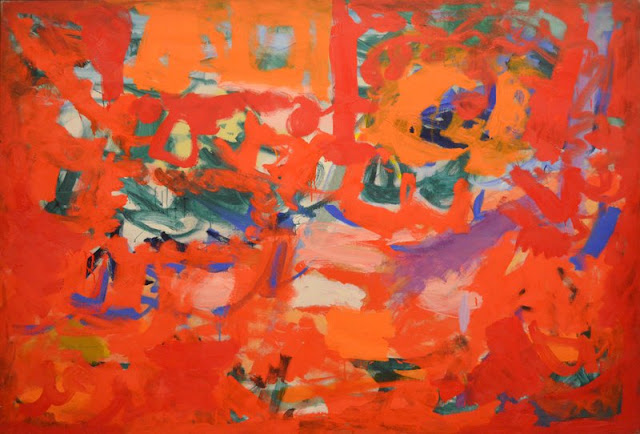Ethel Kremer Schwabacher (born May 20, 1903, New York, New York, U.S.— died November 25, 1984, New York, New York, U.S.) was an abstract expressionist painter, represented by the Betty Parsons Gallery in the 1950s and 1960s. She was a protégé and first biographer of Arshile Gorky, and friends with many of the prominent painters of New York at that time, including Willem de Kooning, Richard Pousette-Dart, Kenzo Okada, and José Guerrero. She was also the author of a monograph on the artist John Ford and a memoir, "Hungry for Light".
Schwabacher was born in New York in 1903. Her family moved to Pelham in 1908 where she first began painting in her garden. She attended Horace Mann School and at age 15 enrolled at the Art Students League of New York. She also studied sculpture at the National Academy of Design until 1921. During 1921, Arnold Genthe took several photographs of her. After her apprenticeship in stone carving with the sculptor Anna Hyatt Huntington, in 1927 Schwabacher abandoned sculpture and enrolled in Max Weber's painting class at the Art Students League. That year she met Arshile Gorky, with whom she developed a lasting friendship.
Schwabacher was born in New York in 1903. Her family moved to Pelham in 1908 where she first began painting in her garden. She attended Horace Mann School and at age 15 enrolled at the Art Students League of New York. She also studied sculpture at the National Academy of Design until 1921. During 1921, Arnold Genthe took several photographs of her. After her apprenticeship in stone carving with the sculptor Anna Hyatt Huntington, in 1927 Schwabacher abandoned sculpture and enrolled in Max Weber's painting class at the Art Students League. That year she met Arshile Gorky, with whom she developed a lasting friendship.
She lived in Europe from 1928 to 1934. She and Gorky took independent studies together between 1934 and 1936. Gorky introduced her to automatism. She was inspired by Gorky's biomorphic abstractions and erotic forms. In the 1930s she began to explore her own sub-conscious, combining automatism with abstract forms, referring to nature. Schwabacher often interconnected themes of womanhood, childbirth, and children.In 1934, she married the prominent entertainment lawyer Wolf Schwabacher and had two children: Brenda Webster, American critic and novelist; and Christopher Schwabacher a lawyer in New York. Her cousin George Oppen, an objectivist poet who went on to win the Pulitzer Prize, also lived in New York in the 1930s.
Following the untimely death of her husband, she expressed her personal traumas through the a series of figurative paintings based on Greek myths. She died on November 25, 1984.Much like her female abstract expressionist contemporary Lee Krasner, whose work was cast in her husband’s shadow until his death, Schwabacher’s work stands as an example of gender politics in art as her works are continually attributed her role as a woman, wife, and mother. Her allusion to Greek themes and myths in the Odes series are said to have been influenced by the death of her husband, but this assertion fails to consider her interest in the Surrealism movement. She uses loose brushstrokes and bold colors to explore themes central to the abstract expressionist movement — Freudian psychology, dream states, and the unconscious.Wikipedia









No comments:
Post a Comment